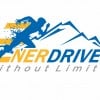How can I do ab exercises without feeling back pains?
How can I do ab exercises without feeling back pains?
Everytime I start my ab workout my lower back begins to hurt any adviceDon't do crunches! Do the plank instead. Check out this article I found very helpful. http://fitnessblackbook.com/six-pack-ab … hunchback/
It sounds very silly, but simply don't use your back! Like PJFitness said, crunches do hurt your back, but if you decide to do them, imagine pushing your belly bottom towards the ground so that your lower back doesn't come up off the ground. This forces you to use your abs more and back less. Hope this helps!
I recommend doing leg lifts. Those help your lower abs without causing as much strain on your back. I also recommend doing back exercise to compliment your ab exercises. Doing both lower back exercises and ab exercises can improve your posture and core strength.
Focus on core exercises like the plank and side planks. Core exercises strengthen the middle of your body in the front side and back withought stressing your back to much. Try it I know you will love it.
If you are doing something that hurts, stop doing it. If you don't you will injure yourself or will just make an injury worse.
As some others have said, planks are really good for building core strength, but if you don't do them correctly you can hurt your back. Push-ups are really good for building the core and are similar to the plank, but might be easier for some.
You may want to do some exercises that will build your back muscles as well. In fact, it may be worth it to consult with a personal trainer to get some targeted exercises for you.
Best ~ fitmomI do flutter kicks in bed, 300 to 1,000, before I rise each day. Planks are good, too as noted above.
Planks dude! They are seriously the best core workout that offer a lot of variation at the same time. It's basically like a push-up position, but rest on your forearms instead of your hands. Attempt to keep your back as straight as possible (Hence, the name of "plank") while holding the position for 30 seconds to a minute. There is little to no "strain" on the back. "Strain" is in quotations because these actually tighten up the muscles surrounding your lumbar spine. All in all, working with planks works your entire core while also strengthening up your key back muscles, so that you can eventually bust out some crunches, too.
I assume that you are doing a sit-up routine or an over flexed crunch routine.
I agree with Joseph in that strengthening the core muscles is a good way to decrease low back pain.
One mechanism that possibly creates your discomfort, barring any overt pathology, is a compression of the little joints in the low back between the lumbar vertebra called facets. This compression occurs more easily if you have an exaggerated curving to the lumbar vertebra called a hyper-lordosis; in horses people call it sway-back.
The muscles which accomplish the full sit-up are generally referred to as "hip flexors". These muscles are named anatomically as the Psoas major and minor and the Illiacus muscles. The Posas muscles attach on one end to the lumbar verterbral bodies and the other end to the leg bones just past the hip joint on the inside of the leg and when contracted causes the leg and trunk to flex. The flexing causes the lumbar curve to increase compressing the posterior facet joints which are highly populated with pain sensory fibers that become active via compression due to the muscle contraction during the exercise.
I would not advise doing the leg lifts as that will also cause the increased arching of the low back once again causing pain.
The "plank" exercise when done properly will decrease the lordoic curve of the low back and could prove beneficial in preventing your pain issues. Crunches when done properly (not over flexing) usually do not cause the issues discussed above.
One last bit of advise; if the pain continues after making changes to your routine I would encourage you to seek a consultation with someone trained to treat musculoskeletal complaints.This is a typical problem for people that have stronger abs and weaker lower backs.
The best thing to counter balance this is to include some lower back training into your core training regiment.
Some of the best exercises for the lower back are the prone cobra, back extensions, and stiff-legged deadlifts. If you are unsure how to perform these exercises, check out the net. There are millions of sites out there that illustrate and have video clips on how to perform these exercises. Make sure you have someone proficient is exercise science or physiology to critique you when you are just beginning. By doing these exercises incorrectly, you can injure yourself and put you behind the eight ball.
You also might want to consider doing stretches for your abdominals and frontal core muscles. This can be obtained by simply placing a swiss ball under your back and hanging your body over it. Place both arms high above your head and arch your spine over the ball. Feels great also!
The reason the plank (that everyone else is talking about) is good is because it strengthens your back muscles as well as your entire core.
I don't agree with people telling you to stop doing it if it is hurting you. Unless you have herniated disks or serious back issues, you can still do what you are doing in modified forms.
Most important though, your back needs to be strengthened to the level in which your abs are. A lot of people are so concerned about strengthening the abs because of what society has molded are thinking. The truth is, your abs are only as strong as your entire core which includes the lower back and obliques.You should deal with the problem. Strengthen your lower back else you can always lift your legs off the ground which will lower your back to ground level thus, less stress.
What position are you in when you are doing your exercises?
The reason I ask is this is the key to figuring out why the pain is occurring AND what you should do to make it feel better.
So someone on here says to do flutter kicks or leg lifts. Thats great if you can stabilize the spine while performing the exercise, but this stabilization is not easy because of the line of tension produced by an activated the psoas major.
The psoas major connects to the front of the spine and activates with hip flexion. This anatomical placement pulls on the spine with hip flexion. So if there is not stability within the spinal column, you will be repeatedly insulting the spine with each lift of the leg. Motion is produced at the point that is least stable. So what you may think is purely hip flexion may actually also have a great deal of extension in the low back.
Crunches are neither bad nor good, just realize what is happening. If you read the most current research by leading biomechanists, the message is repeated flexion of the spine can lead to early degradation of the disc. A crunch, therefore should be performed mostly with the thoracic spine (upper part of the spine not including the neck). You are working the rectus abdominus with this exercise with can be very provocative if you have discogenic low back pain, but it can also be relieving if you have irritation of nerve roots that are mechanically sensitize because this motion will open up the intervertebral foramen.
Planks can be good, but once again it depends. If you have a disc issue, the load produced by all the muscles can cause pain. Further the position itself can be provocative due to the level of extension present.
One more problem - there is no such thing as lower abs and upper abs. Maybe people mean the obliques? Or with reverse crunches they mistake the 'burn' of the psoas activation as the lower abs. if you look at an anatomy book you will see there is no separate lower ab (the abdominals surround the 'core' with muscle on the side) and the rectus abdominus (the only one on the front) does not activate separately (meaning rectus activation includes the upper and lower part). Just look at any study where EMG has been used with a situp or crunching task.
So the real question is what exercises are you doing and what motions cause your pain?
The best answer will be specific to what provokes your pain.
Related Discussions
- 26
Why does my lower back hurts when I do abs workout?
by Anne-Marie 11 years ago
Why does my lower back hurts when I do abs workout?I lay down on my back and do several different sit-ups, sometimes with the upper body, sometimes with the legs getting up and down. But my lower back always hurt. I can feel a gap between my back and the floor when I lay down on my back.
- 11
An Exercise For Lower Back Pain/Stiffness?
by Helen Murphy Howell 13 years ago
An Exercise For Lower Back Pain/Stiffness?Any hubbers have a recommended exercise for lower back pain and stiffness? The stiffness is really due to being dumb the other day. I was stooping for too long doing some gardening and my lower back has stiffened up. There is a bit of discomfort but nothing...
- 4
What are the best ab exercises?
by lisasuniquevoice 12 years ago
What are the best ab exercises?
- 1
How To Exercise Back Pain Away
by tomsee59 17 years ago
According to past research and studies, nearly 80%of all Americans will experience some type of backpain in their lives. The American Academy ofOrthopedic Surgeons believes this as well, as theysay 80% of us out there will encounter some type ofproblem with our back before we...
- 8
How do you burn off weight from the waist and tone up your abs without going to
by Andrew Stewart 12 years ago
How do you burn off weight from the waist and tone up your abs without going to the Gym?Is there a good basic training technique for reducing waist size without great expense?
- 5
Doing crunches i felt a pop in my lower abdomen accompanied by an intense burnin
by zane1954 15 years ago
Doing crunches i felt a pop in my lower abdomen accompanied by an intense burning sensation.Is this a muscle strain? if so, what muscle?

















